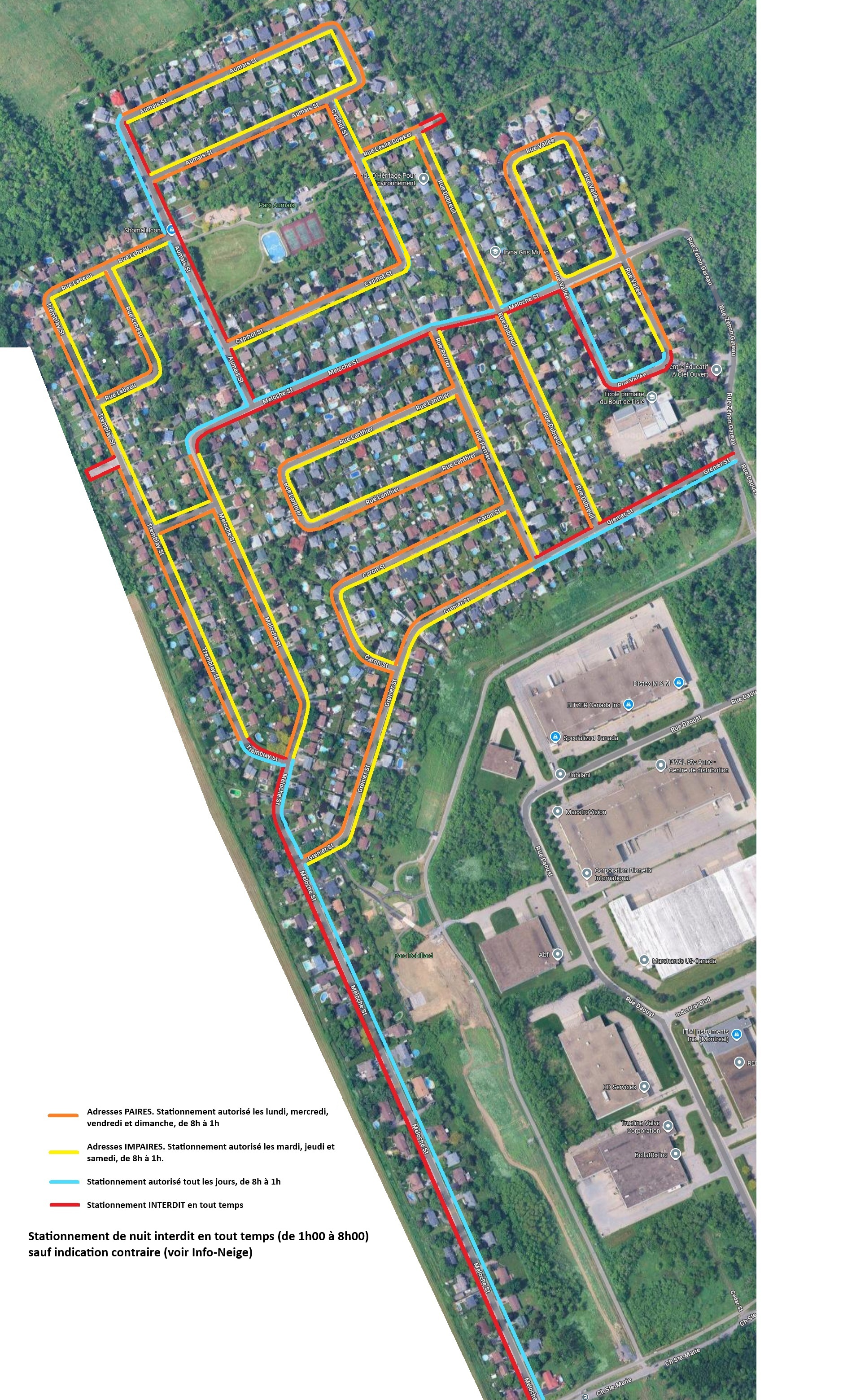Flooding
Current Status
Latest modifications were made on July 6, 2025
We are currently still in NORMAL mode.
The City is closely monitoring water levels with the various stakeholders and is currently implementing an emergency measures plan in anticipation of potential flooding.
STATE OF THE CURRENT SITUATION
Lac des Deux-Montagnes : The level of the Lac des Deux-Montagnes is now under the average flood level.
Lac Saint-Louis : The level of Lac Saint-Louis is 100 mm (4") above the minor flood level and the trend is stable.
What to do in the event of flooding
Presentation for the citizens of Sainte-Anne-de-Bellevue - March 2025
Levels of activation of the emergency plan
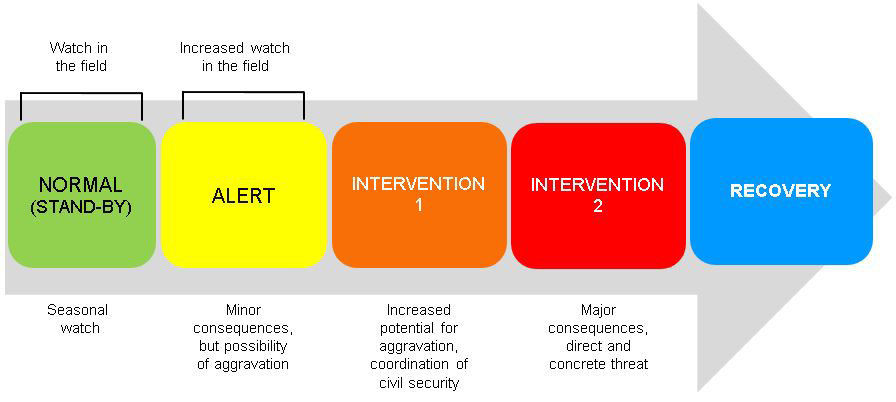
Information to the population
STANDBY MODE
- Website: Regular updates on this page as of April 11
- Social media: Regular updates on Facebook (@VilledeSADB) as of April 11
ALERT MODE
- Newsletters: A newsletter will be sent each day, unless otherwise noted, as soon as we enter Alert Mode, Subscribe here
- Website: Daily updates, unless otherwise noted
- Social Media: daily updates, unless otherwise noted on Facebook (@VilledeSADB)
- Flood Emergency line activated: 514 457-6666
INTERVENTION 1 AND 2 MODES
- CodeRED: Daily calls, text messages or emails sent to residents in the red zone. Subscribe here
- Paper Newsletter Distribution: In the « red zone »
- Website: Daily updates
- Social Media: daily updates Facebook (@VilledeSADB)
- Flood Emergency line : 514 457-6666
- Newsletters: Subscribe here
RECOVERY MODE
- Website: Daily updates
- Social Media: daily updates on Facebook (@VilledeSADB)
- Flood Emergency line : 514 457-6666
- Newsletters: Subscribe here
- Paper Newsletter Distribution: In the « red zone »
- CodeRED : Calls, text messages and emails sent to residents in the red zone. Subscribe here
Red zones
Maps showing only areas where the City of Sainte-Anne-de-Bellevue supplies sand pallets.
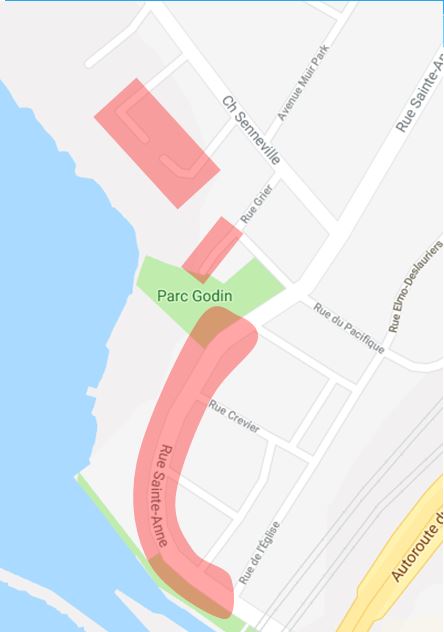
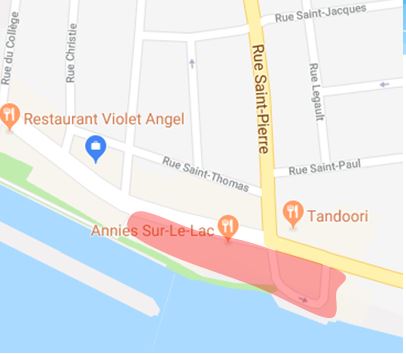
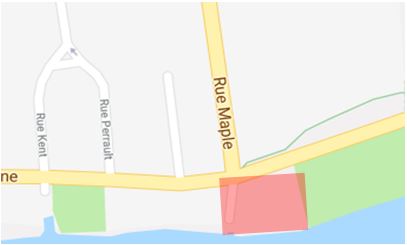
Flood zones
For flood zones, please consult the following sites:
IGO2-Géo-Inondations (gouv.qc.ca) (Site corresponding to flood waters taking into account areas at risk of flooding in 20217 and 2019).
Géo-Inondations is an interactive map that lets you consult the sectors in which flood zone information is available. Under the Transitional By-law, the flood-prone areas concerned are, with some exceptions, the boundaries established according to the most recent maps or flood levels as of March 25, 2021, including territories at risk of flooding by the spring floods of 2017 or 2019.
https://www.cehq.gouv.qc.ca/zones-inond/carte-esri/index.html (site corresponding to flood zones prepared by the Centre d'expertise hydrique du Québec. This map does not take into account areas at risk of flooding in 2017 and 2019.
Legal aspects: The data presented in this application are provided for information only, are provided by the government and have no legal value.
Prepare Yourself!

CAREFULLY PREPARE AND LOWER THE RISKS
- Check to see if your home is located in a flood-prone area.
- Contact your municipality to familiarize yourself with the flooding risks in your district and the emergency measures in place.
- Prepare a family emergency plan and an emergency kit.
- Subscribe to our newsletter and Register to CodeRED to receive updates on the situation and emergency alerts sent by the City.
- Have an anti-backflow device (or check valve) installed. This device will prevent wastewater from overflowing municipal sewers from entering your basement. Ask an expert!
- Check whether your home insurance covers flooding.
FAMILY SAFETY PLAN
A family safety plan is very useful in case of an emergency. Take a few moments to prepare your own plan. It’s easy!
- Always have an emergency kit in your home. Your kit should contain enough material, food and water to provide for your family’s basic needs during the first 3 days of an emergency situation.
- List the contact information of the persons you’ll need to get in touch with in case of an emergency – family members, daycare, school, municipality, etc.
- Prepare a home evacuation plan.
- Make sure you know how to shut off water, electricity and gas in your home, should the need arise.
- In the event of an emergency, avoid using the elevator.
- Plan an emergency route if you have to evacuate your neighbourhood. Plan an alternate route in case some roads are closed. For your safety, remember to notify the authorities responsible for the emergency measures in your municipality that you have evacuated your home, and of the location where you are staying.
- Take an inventory of all your belongings, as well as proofs of purchase, photographs or videos. Keep these documents and a copy of your home and automobile insurance policies outside of your home in a secure location, at the office for example.
EMERGENCY KIT
It’s important to have an emergency kit in your home. Make sure it contains enough material, food and water to meet your family’s basic needs for at least the first 3 days of an emergency situation. Keep your emergency kit in a place that is easy to access. Check its contents yearly and replace batteries and water supplies as required.
Protect your home…not your property
- Install a backflow preventer valve to your floor or garage drains to prevent backup of sanitary sewers.
- Caulk and seal your basement windows.
- Build a sand dike directly against the outside wall for added strength.
- Check that your submersible pump is in good working order.
- Rent additional pumps as necessary.
- Move your furniture upstairs, if possible
Homeowners are required to obtain the necessary equipment and labour to protect their home or business.
In Alert mode, residences and businesses located in the "red zone" can receive up to 4 pallets of sand free of charge. Affected owners must call 514 457-6666 to make the request as soon as the city reaches ALERT mode.
If water begins to cover the floor,
DO NOT TAKE A RISK, CALL 9-1-1
Hydro-Québec or the SIM will take the necessary measures
|
Ayez en tout temps à la maison les articles suivants, idéalement rassemblés dans un sac à dos ou un contenant :
Eau potable — deux litres par personne par jour, pour au moins 3 jours;
Nourriture non périssable — provisions pour au moins 3 jours;
Ouvre-boîte manuel;
Radio à piles — piles de rechange;
Lampe frontale ou de poche — piles de rechange ou lampe à manivelle;
Briquet ou allumettes et chandelles;
Trousse de premiers soins — antiseptiques, analgésiques, bandages adhésifs, compresses de gaze stériles, ciseaux, etc.;
Masques antipoussières — pour filtrer l’air contaminé;
GPS;
Boussole;
Lunettes de soleil et écran solaire;
Canif;
Petit coffre à outils;
Sac à dos
Tente, sac de couchage, matelas de sol;
Réchaud, combustible et ustensiles de cuisine;
Articles de toilette;
Médicaments en vente libre (antihistaminique, ibuprofène, acétaminophène, etc.);
Médicaments d’ordonnance (prescrits par votre médecin);
Sacs à ordures;
Bottes de randonnée pédestre;
Vêtements imperméables;
Vêtements de rechange;
Jeu de cartes, livres, revues.
Les 7 premiers articles vous permettront, à vous et à votre famille, de subsister pendant les 3 premiers jours d’une situation d’urgence, le temps qu’arrivent les secours ou que les services essentiels soient rétablis
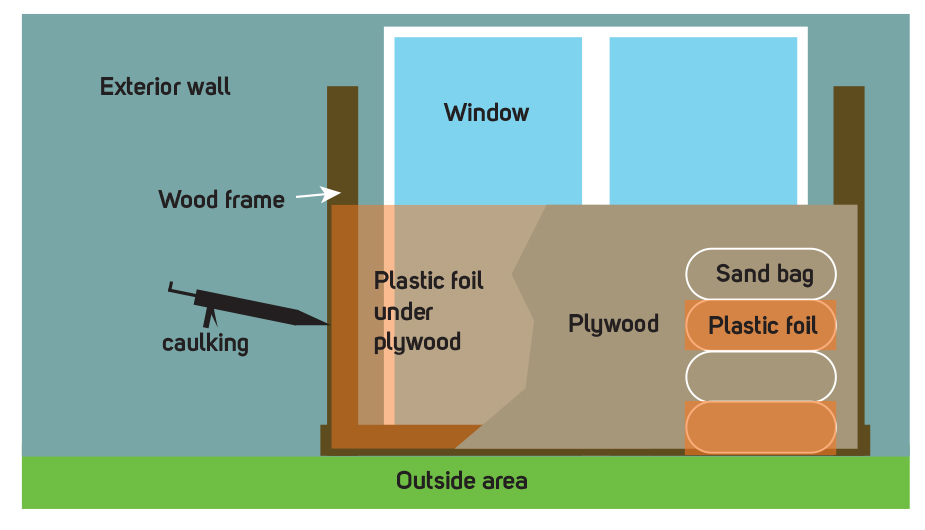
See the video of the Borough of Pierrefonds-Roxboro as an example.
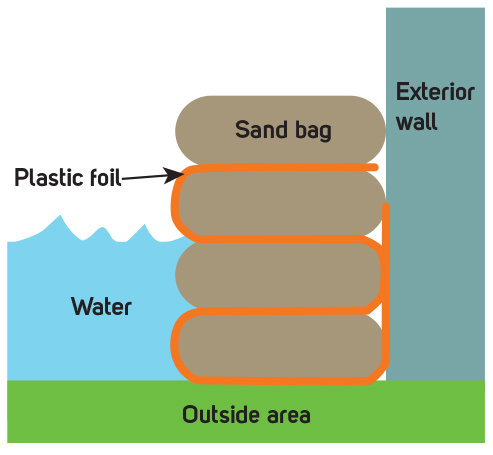
Side view
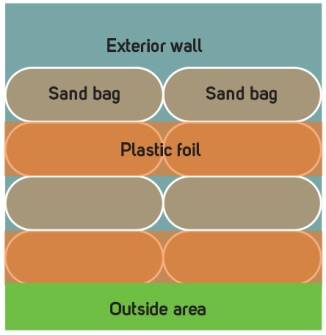
Front view
Where to get sandbags and plastic foil?
Recommended type of plastic foil to use:
Plastic foil - Vapour Barrier : Thickness 0.006 inches / 0.150 mm
You can purchase plastic foil and sand bags in most of hardware stores (Rona, Réno-Dépôt, Patrick Morin, Home Depot, etc.)
In Alert mode, residences and businesses located in the "red zone" can receive up to 2 pallets of sand from the City, free of charge. Affected owners must call 514 457-6666 to make the request as soon as the City reaches ALERT mode.
Some of the closest hardware stores:
RONA Pincourt
1200 Boulevard du Traversier, Pincourt
514-457-3337
Patrick Morin
1900 Boulevard du Traversier, Pincourt
514-425-5858
Réno Dépôt
3010 Boulevard de la gare, Vaudreuil-Dorion
450-455-3067
Home-Dépôt
55 Boulevard de la Cité-des-Jeunes, Vaudreuil-Dorion
450-510-2600
The Ministère de la sécurité publique now offers a compensation and financial assistance program for victims of disasters such as floods:

Volunteering
You are responsible for securing your property.
The City is carrying out an ongoing analysis of the state of the situation for the pandemic and the risks of flooding.
T he City can not garantee that it will be able to find volunteers for you. The municipal employees will only be assigned to protect and secure municipal public infrastructure.
Residences and businesses located in the "red zone" can receive up to 4 pallets of sand free of charge. Affected owners must call 514 457-6666 to make the request.
Pumps and Generators Warning
When emptying your basement, be extremely careful when operating your pumps and generators, in order to avoid suffocation, electrocution or ignition of a fire.
The use of (gasoline) pumps can be a source of carbon monoxide poisoning which can cause various effects ranging from headaches to coma and death. Be advised that asphyxiating gases are odorless, colorless and painless. These appliances must be placed outdoors and ensure that the wind does not push the exhaust into the house.
If you or anyone around you feels any discomfort, stop the operation of your pump, call 911 or see a doctor immediately.
If you must evacuate your home
Inform the municipal authorities by calling at 514 457-6666
WHY ?
- To reach you in case of emergency or additional damage to your home
- To be aware of the evacuated areas to ensure more surveillance
- To inform you of the procedure to return to your home when the time comes
When you call, we will be asked the following questions:
- Personal information (name, address, telephone number where we can reach you)?
- How many people were evacuated and how many stayed at home?
- Do you take specific medications?
- Are you disabled?
- Do you have any pets?
SHELTER AND ASSISTANCE FOR RELOCATION
The City of Sainte-Anne-de-Bellevue will not be able to open a shelter
or offer assistance for relocation.
|
Return home
CAREFUL!
Before you go back home, it is imperative to get advice from the authorities and professionals, especially if your home has been flooded.
1. Notify 514 457-6666 of your intention to return to your home.
- The Montreal Fire Department (SIM) will contact you to set up an evaluation of your home
2. Wait for the SIM visit and authorization to return to your home and follow all their recommendations.
3. Consult specialists
- A master electrician to restore power, check the condition of your electrical installations and carry out any work required to restore them.
- A heating specialist to get your appliances up and running again
- A plumber to check the pipes.
- Énergir or your gas distributor to reopen the gas supply line.
4. Take pictures
- Make a list of the damage caused to your property and send this information to your Borough and your insurer.
5. Other recommendations
- Wear boots and gloves.
- Watch out for pieces of broken glass and other dangerous debris that may injure you.
- Avoid using electrical extensions in places where there are still damp spots.
- Don’t use any flood-dirty electrical or heating equipment, to avoid the risk of electrocution or fire.
- Dispose of all food and medication that have been in contact with flood water or that could not be stored at appropriate temperature.
- Dispose of anything damaged by following the municipality’s instructions in this regard.
- Keep an eye on the structure of your home. Floor bulging or wall warping could jeopardize your family’s safety as well as your own.
Numéros d'urgence
- Flood emergency : 514 457-6666 (activated in ALERT mode)
- Police and Fire: 9-1-1
- Info-Santé: 8-1-1 (Health-Info)
- CLSC du Lac-St-Louis (CIUSSS): 514 697-4110
- Hydro-Québec: 1-800-790-2424 (Power Outage Info) or call 9-1-1 (Emergency situation)
- Énergir: 1-800-361-8003 (odours and gas leak) or call 9-1-1
- Transport Québec: 5-1-1 (Road Network)
Useful web links
URGENCE QUÉBEC
- What to do in case of floods
- Before a disaster
- During a disaster
- Return to your home
- Information material: In the event of a flood
- Information material: Flood protection
- Water Level - Lac des Deux-Montagnes
- Water Level - Las St-Louis (you need to click "I agree" and the bottom of the page)
- Barreau du Québec - Flood | legal aspects (in French only)
GOUVERNEMENT DU QUÉBEC
GOUVERNMENT OF CANADA
Documents to download
Measures to take during floods March 2025
Leaflet | Flooding April 1st 2022
Presentation | Emergency Measures | 2023 (FR) April 4th 2023





